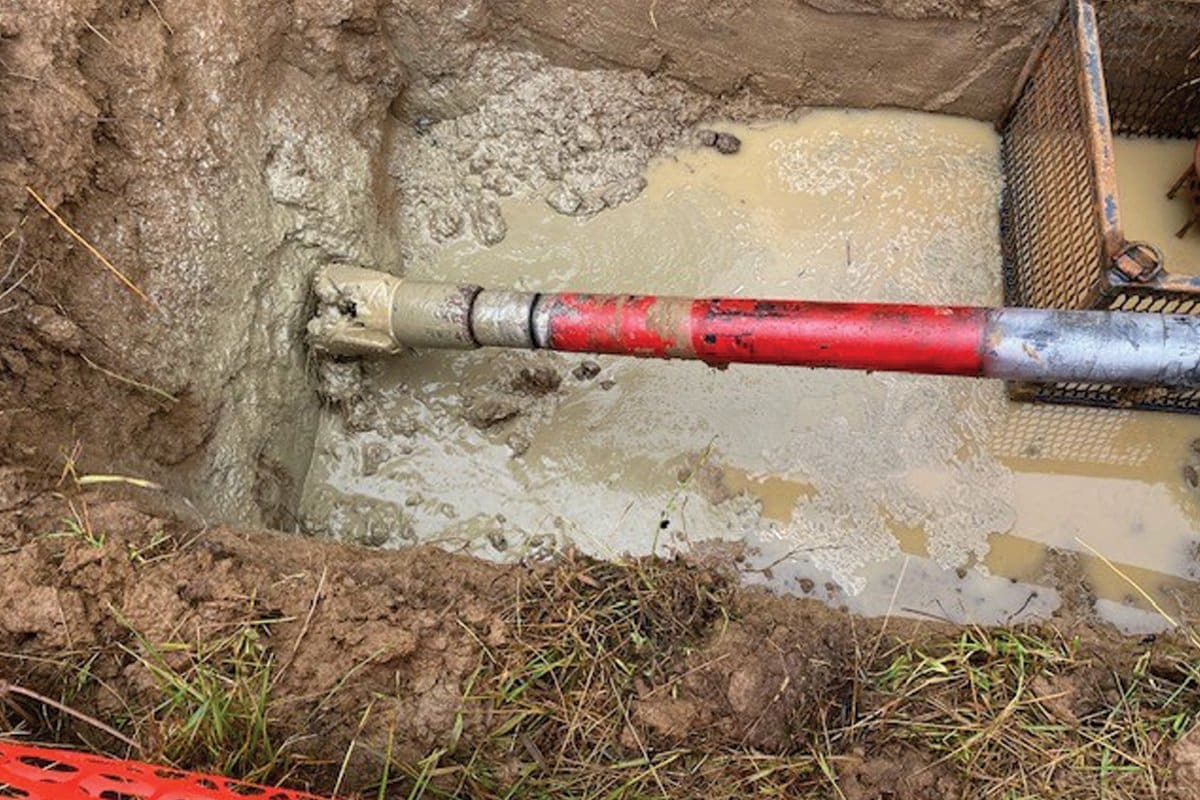
Production Speed & Small-Diameter Jobs

Let’s make an analogy…
Large-diameter drilling and residential service line installation drilling are similar to the difference between a green beret sniper and a quickdraw lawman of the Old West. Would you expect that sheriff wielding a long-barreled rifle with a scope to outdraw an opponent for each draw? Nope, he’s going to need something lighter, easier to maneuver, and able to get several shots out quickly. Drillers rely on their different tools to deliver specific results.
Drillers that are looking to bore deep and far in varying difficult ground conditions will opt for something like a 4-¼” Thread-on universal transmitter housing with DCI’s 19” Transmitter, using a tri-cutter bit such as the Eagle Claw SD. This setup will ensure stability and consistency and get the job done on a 1,000-2,000 ft. shot. On the contrary, using that same setup for a street-to-house service line bore will be just as clunky as that Sheriff trying to quickdraw with a sniper rifle.
A residential driller will need something faster and more agile. He’ll need quick setup, agile steering, fast pullback, and speedy cleanup. There are systems such as Melfred Borzall’s Service Shot System that can give that driller the “quickdraw” production he’ll need for the day to be successful, but let’s break down why on a more general level.
Setup
Let’s face it, setting up the job is much of the work, but not the most interesting part. We brag about long bores and dead-on shots but never mention the time-sapping setup that precedes the actual boring. Establishing safety protocols, digging pilot and exit pits, positioning the rig, mixing the mud recipes, getting the vac in place, connecting the tooling and clocking your locating equipment. When your day includes 15-20 residential shots, this setup becomes problematic for production time. Using tooling that doesn’t require mud mixing or fluid will dramatically reduce the time to set up and eliminate altogether the cost and time of a vac. Coupled with the right tooling, this elimination of fluid, when appropriate and safe, can also remove the time you’ll need to dig those entry/exit pits.
Pilot Shot & Pullback
Now that you are set up properly (and quickly!), it’s time to start drilling. This is when maneuvering through the ground, which has to be as fast as it is agile. Because you’re in a residential area, one minute you may be next to a water main only to find yourself a few inches from an abandoned irrigation system someone buried. This requires a smaller diameter housing and bit combination with minimal ground resistance and maximum steerability to dodge quickly without much clearance. In residential, forgiving soil, you can likely either opt for a direct pullback, which can speed up production considerably, or have a quick-disconnect option for your tooling. Either way, avoiding the timely threading on and off of lead rods and reamers will be crucial if your job allows for that. Look for something that can bolt onto your pilot bore housing/blade combo or has a quick-disconnection type that you can just knock out a roll pin, swap out the bit for a reamer, and start pullback.
Clean-up & Reset
Once a bore is complete, the crew needs to move on to the next shot on the block quickly. Using a housing with optional drill fluid gives the possibility of NOT having to clean or dispose of messy mud…especially when the ground and conditions are such that fluid is not needed. Shaving off that cleanup time and messy pit will also contribute to being able to access your tooling easily if you need to break it apart. A quick reset to the tooling without having to mess with mud and cleanup can make a world of difference when performing 15-20 bores in a single day and keep those production rates going shot after shot!
Using the tools, systems, and processes that will enable success for the individual job type will make all the difference. Long gone are the days of pulling out the same paddle bit and housing and running the same mud mix for every job that comes your way. To keep production at a rate for a driller’s success, he’ll need to be selective, smart, and safe about how he’s handling the most crucial parts of the job – the setup, pilot bore, pullback, and cleanup to reset.




